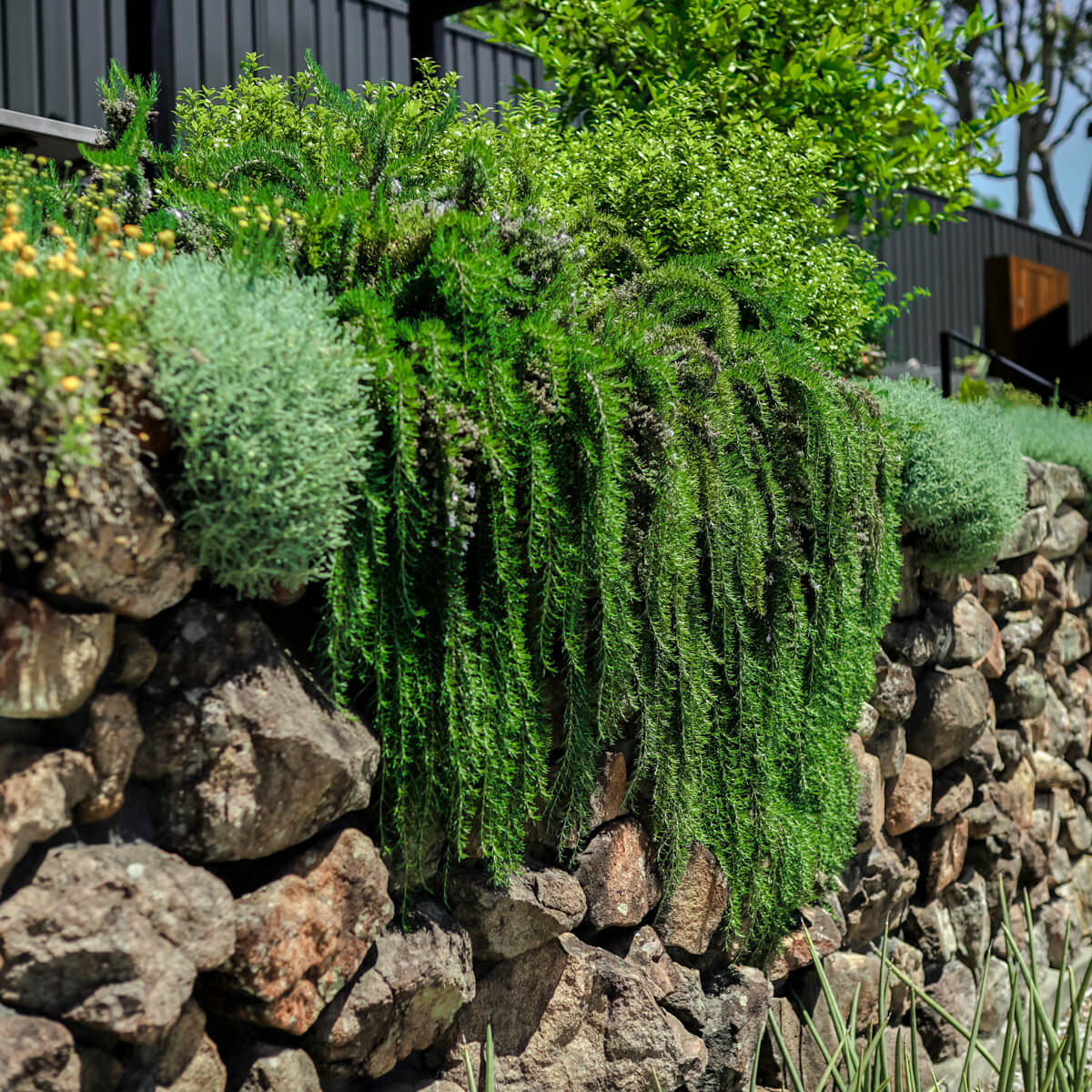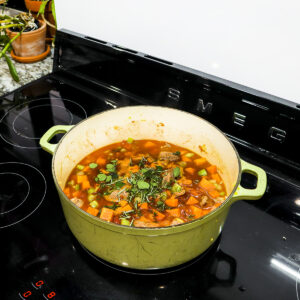Cooking With Spring Herbs
 I love cooking with fresh produce particularly when it’s been grown in our little garden.
I love cooking with fresh produce particularly when it’s been grown in our little garden.
Herbs are certainly my favourites! Even if you have limited space, or time, given the right spot, herbs can thrive without much care, and then when it comes to cooking, they can completely transform a dish.
I’ve included a few of my seasonal favourite recipes below. They all have a herb as the key ingredient, usually one which needs pruning at this time of year!
Minted Peas
This recipe transforms frozen peas into delicious, mashed bed for roast meats. I love the balance of flavours between the freshness of this dish, and the full flavour of the roast meat and vegies.
Ingredients
- 400g Frozen Baby Peas
- Half of a Brown Onion

- Tablespoon Butter (Or Nuttelex as a dairy free substitute)
- Generous handful of Mint chopped well (Approx. 1/2 cup)
Method
- Soften the Butter in a pan and add the Onions, cooking over low heat until translucent.
- Add Baby Peas. Heat over low heat for 5 minutes, with the lid on to retain the moisture.
- Then blend the mixture, or mash if you want a coarser appearance, and then stir through the chopped Mint leaves just before serving.
- Generously season and serve.
Roast Pumpkin with Rosemary and Dukkah
This is a recipe I often cook on a Sunday afternoon in Spring, just to have in the fridge for the week. It’s amazing as an accompaniment to meat dishes, added to salads, and I even sneak it sliced into the kids’ salad wraps for school, making them more filling and tastier.
Ingredients
- ¼ Pumpkin (Tip – I usually purchase whatever is on sale, as when it’s plentiful it’s usually in season and fresher. Butternut and Queensland Blue pumpkins are favourites.)
- 2 Tablespoon Olive Oil
- 4 Cloves of Aussie Garlic
- 1/4 Teaspoon Smoked Paprika
- Bunch of Fresh Rosemary. (Set aside one sprig and finely chop to ½ Tablespoon)
- 2 Tablespoons Dukkah
Method
- Preheat your oven to 180.
- Crush the Garlic to release the oils, and then place this into the Oil to fuse.
- Cut the Pumpkin into chunks. I like to leave the skin on. It’s delicious and eliminates unnecessary food waste.
- Place a little Oil on the bottom of the roasting pan, and add your Rosemary and Pumpkin, skin down. Sprinkle some Smoked Paprika over
 the Pumpkins. Use the remaining Oil and Garlic to coat the Pumpkins.
the Pumpkins. Use the remaining Oil and Garlic to coat the Pumpkins. - Roast at 180 degrees for approximately 40 minutes. I usually re-drizzle the Oil in the pan onto the Pumpkin after 20 minutes. (Tip – If you want me make this quicker, simply cut the Pumpkin into smaller cubes, shake in a little more Olive Oil to coat and cook at 220 for approx. 20 minutes, or until each cube is golden brown and soft when pieced with a fork. Taste testing recommended!)
- Finely chop the remaining Rosemary and mix through the Dukkah. Sprinkle the pumpkin with the mixture when it’s still hot. The Rosemary sprigs on the tray infuse the Pumpkin with a lovely woody flavour. The small additional to the end adds a fresher flavour.
P.S. Studies have shown this woodsy scent helps with concentration and may boost moods! Perfect before the kids homework duty! 😊
Added to a bed of greens with Goats’ Cheese and a splash of Red Wine Vinegar, this is my favourite salad!
Creamy Thyme Chicken
A midweek favourite with the kids because of the flavour, and with me, because it’s so quick I can help them with homework before bed.
Ingredients
- 2 Large Chicken Breast
- 1 Tablespoon Olive Oil
- 3 Tablespoons Butter (Or Nuttelex for a dairy fee option)
- 1 Onion
- 4 Cloves Garlic
- ½ cup Chicken Broth (Or White Wine if you have an open bottle 😊)
- 2 Teaspoons Lemon Juice (Freshly squeezed if possible)
- 2 Teaspoon fresh Thyme Leaves and handful of sprigs to garnish
- ½ cup Thickened Cream
- Optional Parsley or Chives to garnish is you have them in the garden.
Method
- Slice each Breast into serving pieces. I usually cut thirds however the key is to keep the even thickness. Coat the breasts in the Olive Oil and season.
- Melt 1 Tablespoon of Butter over a medium-high heat and then add the Chicken in batches. Cook for approx. 3-4 minutes per side, so that it’s a
 lovely golden colour and cooked through. If unsure cut open one of the thicker pieces. Remove from pan.
lovely golden colour and cooked through. If unsure cut open one of the thicker pieces. Remove from pan. - Over medium heat, add extra Butter, Onion and Garlic until the Onion is translucent. (Approx. 3 minutes)
- Add Chicken Broth (or wine), Lemon Juice and Fresh Thyme Leaves and allow to simmer for 5 minutes. Stir regularly.
Tip – I remove a little of the sauce at this point and set aside with a chicken portion so I can feed the dairy free member of our family. It’s delicious even before the cream.
- Over a low heat, add the Cream, stir well and add back in the Chicken including and juices which has escaped as they rested. Heat gently (low) for another 2 minutes and it’s ready to serve.
- Garnish with the left-over Thyme, and any leftover Lemon pieces. Parsley or Chives are also a lovely addition for garnishing if they are handy.
- I usually service this dish with rice, or mashed potato and some greens such as broccoli or beans.
Shallots
So, this is not a recipe, but Shallots are certainly my favourite herb to grow. It looks gorgeous in pots and is easy to grow if you have sunny spot.
I just put this on everything… steak, salads, noodles, rice dishes and scramble eggs. Peter jokes that nothing can leave the kitchen without “the green”. It just makes everything look and taste better! Plus, it turns out shallots play a role in removing toxins from the bloodstream…. What’s not to love!!











